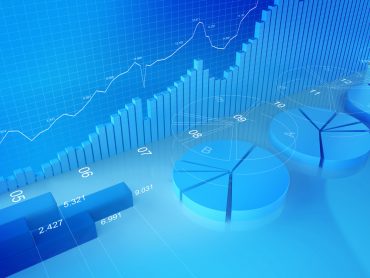
AI and machine learning will exploit new hardware and growing capabilities in visual data capture and analysis in the coming year.
The year ahead will literally be marked with greater clarity than ever before, thanks to the accelerating convergence of hardware and systems that extend our visual capabilities with artificial intelligence (AI) and machine learning.
Thus, one of the most compelling trends for 2019 will be the rise of visually oriented AI as the latest driving force behind the real-time enterprise.
Here are just three ways in which the power of visually oriented AI will be seen across real-time enterprises:
AI-powered visual analytics. In 2018, we saw the introduction of products such as Netvue’s Belle, an AI-powered, camera-enabled doorbell that can recognize the identities of guests, and greet them accordingly. Look for more innovative applications along these lines that extend to the business sector — not only recognizing and greeting customers but also gauging their sentiment.
See also: Splunk sees AI moving from early adopters to mainstream in 2019
A recent Forbes Insights-Intel survey of 800 enterprises finds 80% of companies are piloting or implementing visual analytics, and another 14% already have sophisticated visual analytics implementations, ingesting visual data captured by IoT-enabled cameras and analyzing it to enable greater insights and determine courses of action. Along with customer sentiment, common use cases are security, industrial production quality, and traffic management.
AI-powered augmented reality. Augmented reality will increasingly take a prominent role in various jobs — from medical procedures to plumbing. In the year ahead, there will be AI-driven applications that will enhance AR to new levels. Garner’s Tom Bittman, for one, recently stated that AR is part of a “broader shift to always-on, interactive experiences that blend the physical, virtual and sensor-integrated realms.” AR, he says, “will play a key role in new overlays of news, communications, education, and training.” Look for increased leveraging of online videos (such as those through YouTube) to be “incorporated into wearable goggles or glasses, providing a visual guide as an individual works on a piece of equipment or technology.”
The combination of mixed-reality devices and AI represent the near future of digitally empowered work, I wrote in a survey report for Forbes Insights and Microsoft. Over the next three years, 59% of enterprises intend to outfit their first-line workers with wearable computers or devices. Another 53% say first-line workers will be employing RFID transmitters or sensors as part of their work, while 51% foresee a future with personal digital assistants. “Forward-thinking organizations will continue to push the boundaries of first-line worker productivity by piloting and deploying new generations of technologies to their workforces, delivering truly immersive and empowering experiences.”
Automatic labeling or indexing of photos. One of the challenges to managing content or unstructured data has been the ability to search and place these assets into context. AI and machine learning are doing just that — in real time, as data is generated.
“Coupling technologies such as machine learning and natural language processing with search is helping companies to glean greater value and insight from all their data, both structured and unstructured,” said Kamran Khan, a managing director with Accenture Applied Intelligence, recently told me in an interview for Database Trends & Applications. “It increases the ability to find, analyze, understand and present data more accurately and efficiently, and provides a new turbo-charged way of searching that helps companies not only gain more insight from their data, but it also improves the user or customer experiences that directly support many business goals and objectives.”
AI technologies are changing the way information is managed, said Khan. “Applying natural language processing and machine learning to search applications, for a smarter way of searching and understanding data will absolutely change the way information is managed. Right now, nearly 80% of all enterprise data is unstructured content which is rarely used in analytics. This number will only continue to grow as each enterprise’s data continues to increase.”
The year ahead will be opening up new paths to innovation through AI and machine learning. In the process, our real-time visual capabilities will become greatly enhanced.




























